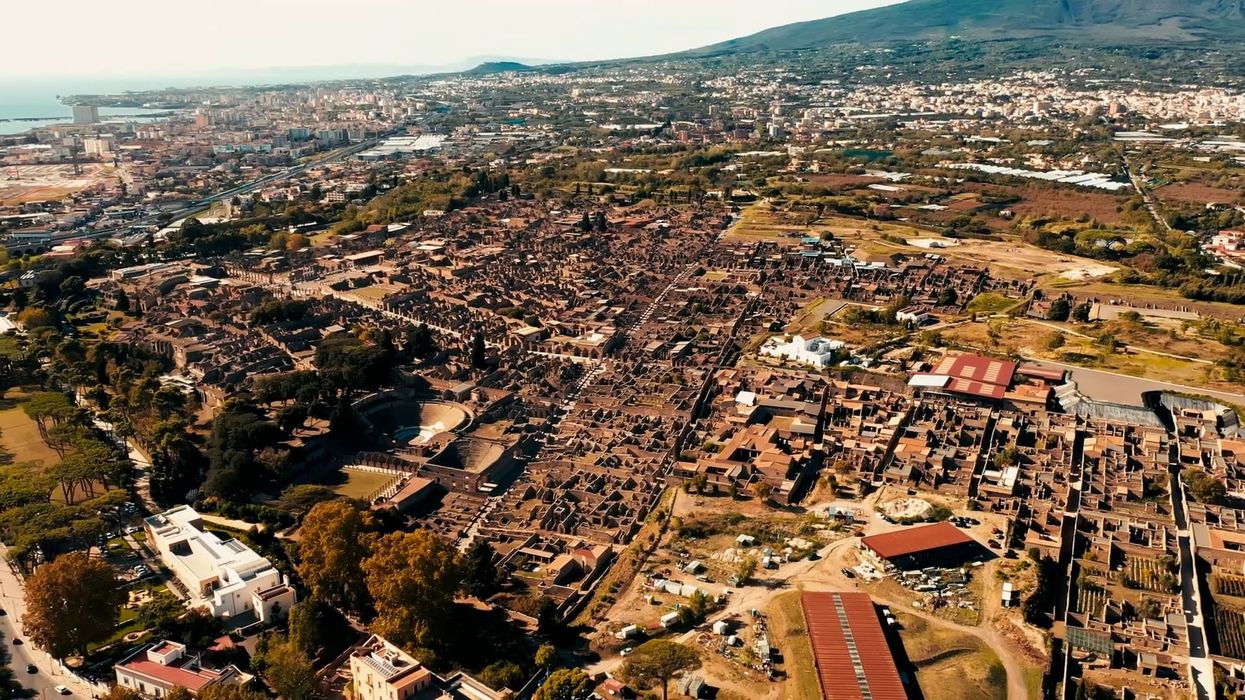Science & Tech
Gregory Robinson
Mar 08, 2025
Pompeii Preserved: Drone Footage Reveals Roman Life
HoriZen / VideoElephant
A glass-like substance that was found in the skull of a person who died in the volcanic eruption of Mount Vesuvius that destroyed Pompeii and Herculaneum in 79 AD has revealed more information about how the deadly event unfolded.
The study published in Scientific Reports assessed the puzzling substance. Researchers believe the unfortunate individual’s brain once underwent “fast heating” followed by “very fast cooling”.
Glass is commonly manufactured by humans, it can also form naturally in very particular conditions. One example is obsidian, a type of natural volcanic glass that forms when lava cools very quickly after an eruption. Meteorite impacts can also create natural glass formations.
The formation of glass needs rapid cooling to prevent crystallisation, and it must also solidify at a temperature well above its surroundings. It's therefore very rare for an organic substance to become glass-like because ambient temperatures are rarely low enough for water, a key component of organic matter, to solidify.
Fragments of the glass found inside the skull and spinal cord of the person who once lived in Herculaneum were analysed by scientists using X-rays and electron microscopy. The individual had been found lying in their bed in the Collegium Augustalium. They found that the brain must have been heated above 510°C at least, before cooling rapidly.

Due to this research, further light has been shed on the timeline of events leading to the destruction of the two ancient cities. The organic glass found in the brain could not have formed if the person was heated solely by fiery wind and ash; this is because the temperatures of these flows did not surpass 465°C, and they would have cooled slowly.
Based on the analysis of more recent volcanic eruptions, researchers concluded that a superheated ash cloud that dissipated swiftly was the initial deadly event during the eruption of Vesuvius.
This likely raised the individual’s temperature above 510°C before rapidly cooling. Their skull and spine likely protected the brain from a complete thermal breakdown, allowing fragments of this unique glass to form.
“Here we demonstrate that material with glassy appearance found within the skull of a seemingly male human body entombed within the hot pyroclastic flow deposits of the 79 CE Vesuvius eruption formed by a unique process of vitrification of his brain at very high temperature, and is the only such occurrence on Earth,” researchers explained in the new study.
Why not read...
Scientists uncover surprising truth about identity of Pompeii victims
Archaeologists discover breathtaking Roman artefacts hidden in buried ancient city
How to join the indy100's free WhatsApp channel
Sign up for our free Indy100 weekly newsletter
Have your say in our news democracy. Click the upvote icon at the top of the page to help raise this article through the indy100 rankings.
Top 100
The Conversation (0)














